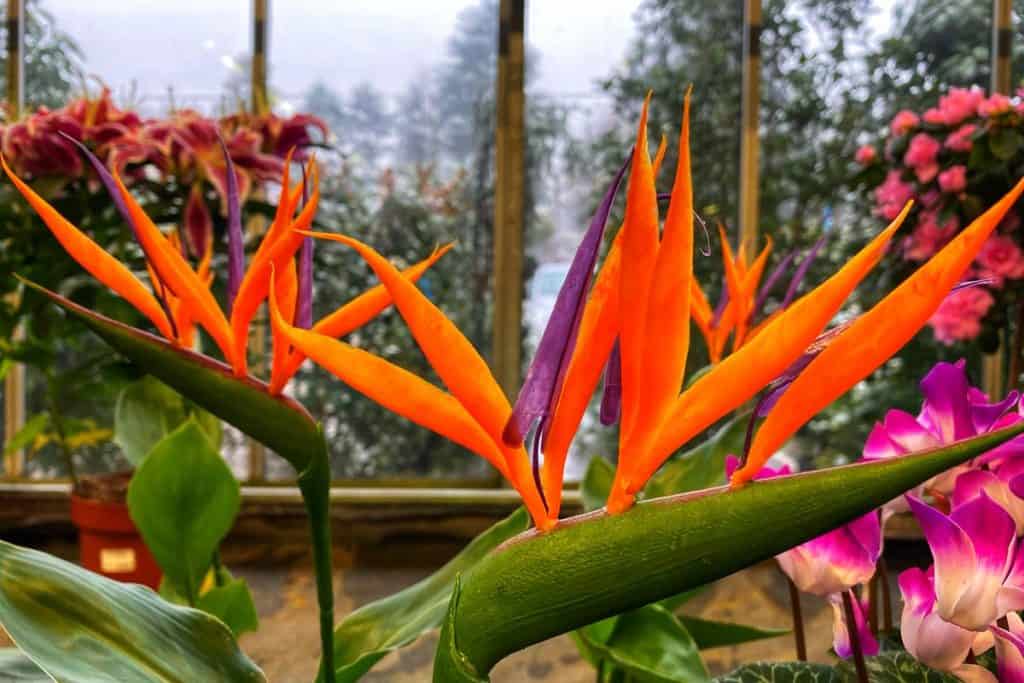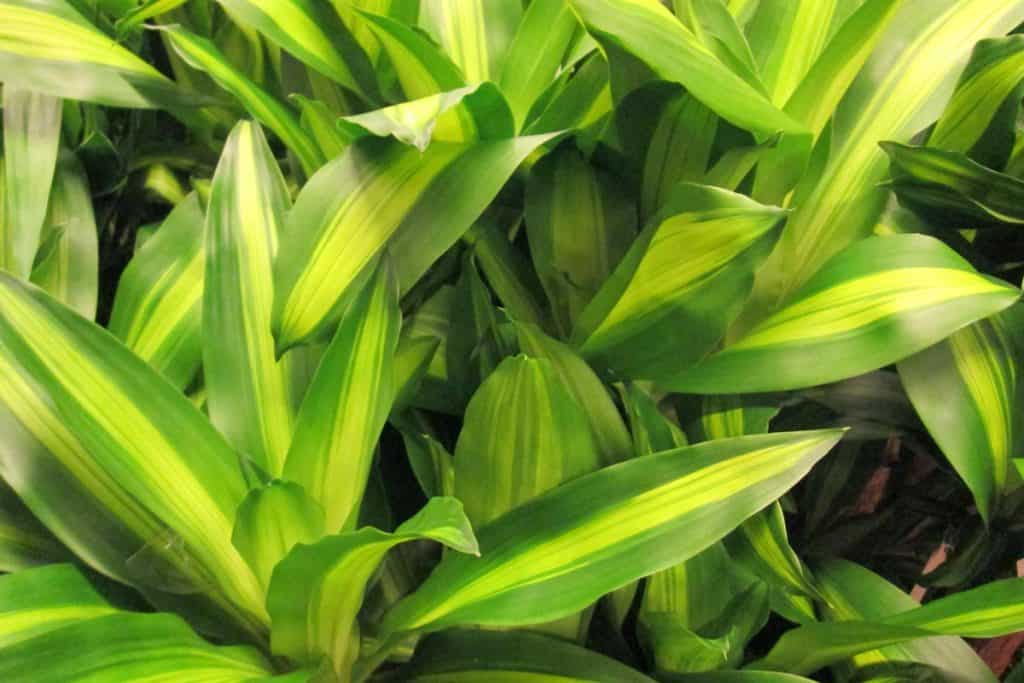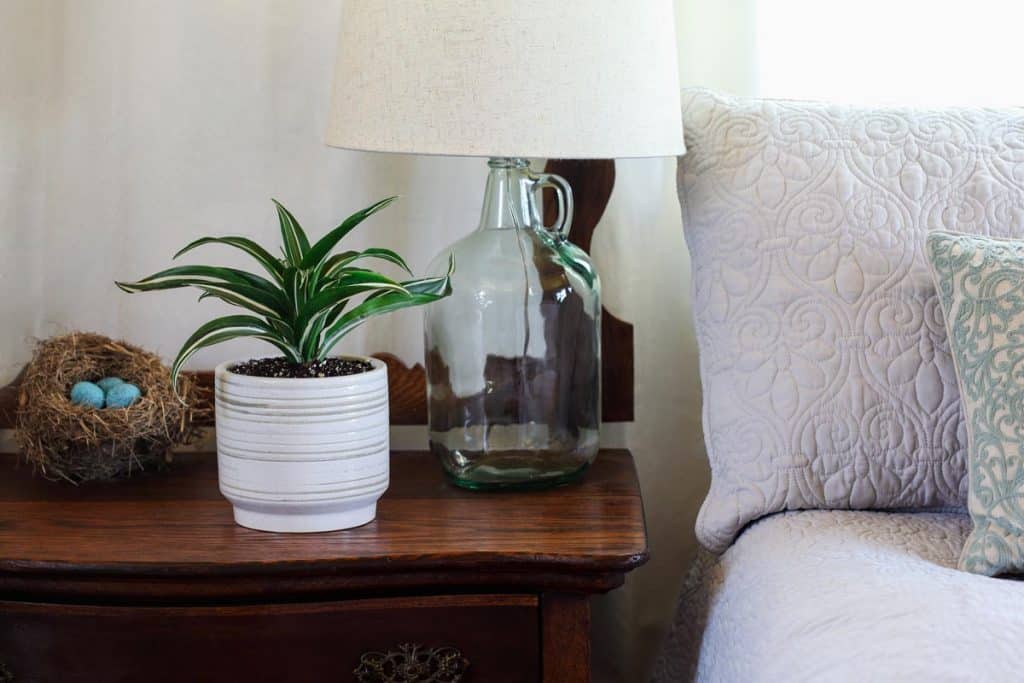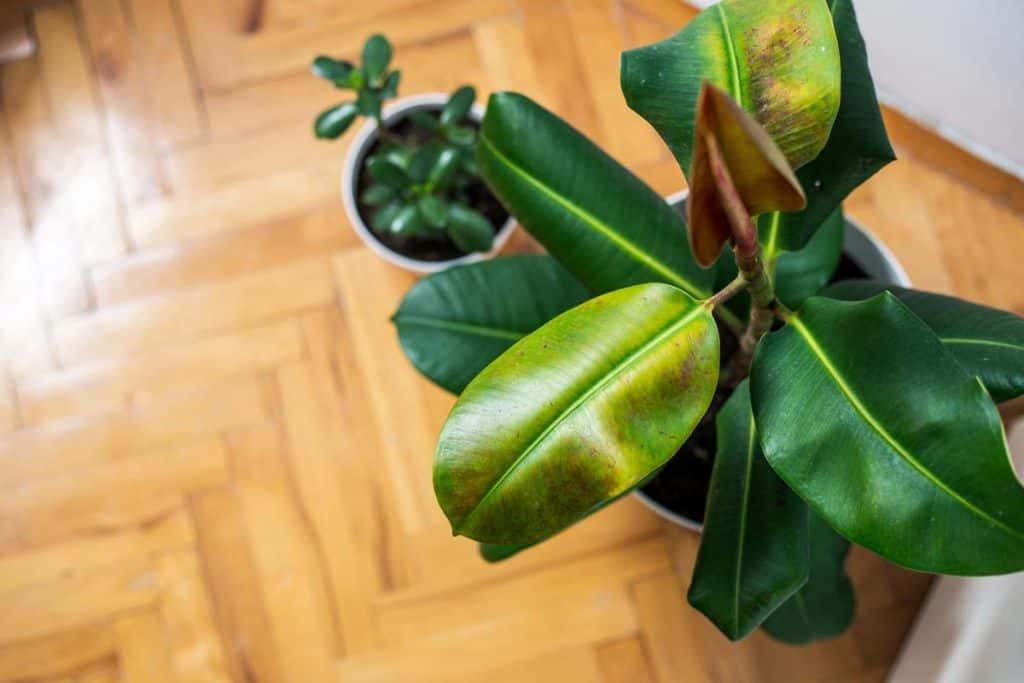 Growing an indoor tree is a fun way to show off your inner green thumb. If you are interested in indoor trees that require low light, but don't want to struggle with your plant, consider getting an indoor tree that is older and established. Be prepared to enjoy an indoor tree that thrives under low light for many years to come, as they are typically slow-growing compared to other species of trees.
Growing an indoor tree is a fun way to show off your inner green thumb. If you are interested in indoor trees that require low light, but don't want to struggle with your plant, consider getting an indoor tree that is older and established. Be prepared to enjoy an indoor tree that thrives under low light for many years to come, as they are typically slow-growing compared to other species of trees.
Keep in mind that all plants need some amount of light. No developed plant can thrive in utter darkness. However, while some plants - and indoor trees - are best suited for sunny spots with plenty of direct sunshine, there are varieties that do well in partial, indirect light. In other words, they can thrive even in low light conditions.
As long as your home has a few windows that do receive some natural sunlight, you can manage to keep these indoor trees happy and healthy. You can also look into using LED lights to maintain your tree's light needs too.
Having a tree at home is a great way to enjoy nature indoors, clean your air, and elevate your mood. Keep reading and discover the wonders and benefits of our curated list of indoor trees that look lush and lovely, even when there is little light.
1. Alli Ficus
The Alli Ficus, known by its Latin name, Ficus maclellandii, will give any space in your home a more tropical feel. The Alli Ficus originated in India, China, Malaysia, and is a native of southeastern Asia. Growing this plant is a pleasant experience because it produces leaves that are slender, long, and have a vibrant green color. Because of this plant's appearance, it has also been called the Banana leaf fig.
Indoor gardeners will appreciate the Alli Ficus because it is a slower growing and less finicky variety than its relatives, the Fiddle Leaf Fig and the Ficus Benjamina. Ideally, it is better to place this type of tree near a window where it can receive bright, indirect sunlight, but it will still fare well under low light conditions. Gardeners can move this tree about confidently without worrying it will go into shock and easily lose its leaves. Pruning the Alli Ficus is a good practice, or you can allow it to grow uninhibited and display its full foliage, which is akin to a willow tree.
Be prepared to grow an Alli Ficus in dry soil that drains well, and allow the soil to dry out before watering. Outdoors, the Alli Ficus prefers zones 9 through 11 to thrive. New leaves will have a ruddy bronze color before they become green on maturation. The Alli Ficus can reach a towering 6 to 8 feet in height and cleans the air of formaldehyde. Do be cautious as this plant is toxic to children and pets.
Check out this fertilizer for your Ficus tree on Amazon.
2. Lady Palm

The regal appearing Lady Palm, also known as Rhapsis excelsa, is an attractive choice for an indoor tree because it tolerates low light conditions and requires low humidity levels. The Lady Palm is visually stunning, as its dark green leaves take on a fan-like appearance that extends itself from stalks.
Indoors, the Lady Palm prefers temperatures between 60 and 80 degrees Fahrenheit and soil that is rich, well-draining, and has plenty of organic material. The soil should be kept moist, and the palm should be fertilized annually. Gardeners can control the size of a Lady Palm via its container size, but this plant should be repotted every two years. The Lady Palm prefers growing zones 8b through 12 and needs partial or full shade to thrive.
Even though the Lady Palm loves bright, indirect light, it will still thrive when placed in an eastern or northern window. Since this plant can reach heights as low as 1 to 3 feet or a staggering 20 feet in height, it makes a dramatic accent for living rooms, offices, and dining rooms. Make sure to give your Lady Palm fertilizer every month between April and September.
Check out this elegant, air cleaning Lady Palm on Amazon.
3. Bird of Paradise

The Bird of Paradise tree is often confused for a banana plant at first glance, but under the right conditions, it will produce gorgeous, vibrant flowers. Known by its Latin genus name, Strelitzia reginae, this tropical beauty is a native of South Africa. It is believed that the splitting of this plant's leaves is an evolutionary measure to protect it against damage from high winds. The Bird of Paradise is suitable for growing in zones 10 through 12. Give this plant a welcome environment by placing it in moist, well-draining soil with a pH level of 5.5 through 7.5.
Allow the soil to dry out at the topmost level between 1 to 2 inches in depth before watering, and water this plant more frequently during summer months. Ideally, the Bird of Paradise prefers a high humidity environment and temperatures between 65 to 85 degrees Fahrenheit. Indoors, you can expect a Bird of Paradise plant to reach a height of 3 to 5 feet in height, and its leaves will spread out between 2 to 3 feet. Take precautions as the flower's seeds contain a toxin, and the leaves are a source of hydrocyanic acid.
Check out this starter Bird of Paradise plant on Amazon.
4. Corn Plant

The Corn Plant, also known as Dracaena fragrans massangeana, is a popular indoor plant found in homes and offices. Originally from Africa, this exotic plant can reach heights of 6 feet or higher when grown indoors. It's no wonder this plant is a popular choice for gardeners, as it is easy to grow and requires low light and a moderate amount of water. Ideally, try to water this plant every 7 to 10 days as needed, since this plant prefers a moist and humid environment.
The leaves of a Corn Plant are usually green in the center with yellow and green striped edges, or yellow in the center with green edges. Corn Plants are beloved because they help clean the air, have attractive broad, glossy leaves, and produce fragrant flowers. It is not impossible under the right conditions for a corn plant to flower indoors. Caution should be taken for anyone who owns a cat or dog as this plant is toxic.
Check out this potted Corn Plant on Amazon.
5. Janet Craig Dracaena

The 'Janet Craig' Dracaena is known by the Latin name, Dracaena deremensis, and it is a low-maintenance plant that is perfect for an indoor garden. A native of Africa, this tree is a popular choice because it thrives despite neglect and can adapt to low light conditions. Newbies to caring for indoor trees can find success with this majestic plant, as its three canes display dark green, shiny leaves that erupt in a tuft-like structure when it is mature. When young, this plant starts with a tuft of leaves that stand straight up, until the canes fully form.
Give a 'Janet Craig' Dracaena a regular misting and allow its soil to dry thoroughly before watering. Keep this tropical plant happy and in temperatures ranging from 65 to 80 degrees Fahrenheit. The 'Janet Craig' Dracaena prefers slightly acidic, well-draining potting soil with a pH level of 6 through 6.5. Ideally, this plant thrives in growing zones 9b through 11. Please take care with this majestic looking tree, as it is toxic to young children and pets.
Check out this set of Janet Craig Dracaena trees on Amazon.
6. Fiddle Leaf Fig

The Fiddle Leaf Fig is a fun indoor tree to grow and gives your home some flair from the rainforests of western and central Africa. When growing this tree indoors, it is critical to rotate them so they do not develop a bend, as this plant loves to follow the light. The leaves of the Fiddle Leaf Fig are large, veiny, and shaped like a violin. Be careful that pets and small children don't eat the leaves as they can cause digestive issues.
Grown indoors, this tree does well when placed near an eastern window and loves lots of sunlight exposure for their substantially large leaves.
Thankfully, the Ficus lyrata is a robust plant that is tolerant of low light conditions. Watch this beautiful tree stretch to heights of 6 feet and beyond indoors. Plant the Fiddle Leaf Fig in any type of quality potting soil that is well-draining, and keep it in temperatures between 60 and 80 degrees Fahrenheit. Also, because this plant is a rainforest native, it needs to be kept moist but not drenched. Ideally, the Fiddle Leaf Fig thrives best in growing zones 9 through 11.
Check out this starter Fiddle Leaf Fig tree on Amazon.
7. Rubber Tree

The Rubber tree is a popular type of Ficus grown indoors and will tolerate neglect and low light conditions. Indoor gardeners take pleasure in growing a rubber tree because it reaches a medium height and displays large, deep green, glossy leaves that are prominent and visually appealing. When growing this tree in low light conditions, temperatures need to stay on the warmer side. Known by the Latin name, Ficus elastic, the growth of this tree can be restricted depending on the pot size used.
Keep a watchful eye on a rubber tree plant, as it may need a bit more light if its leaves begin to lose their luster. During the summer water a rubber tree more frequently, but during the colder months, you can water it up to twice a month without problems. It is best to water an indoor rubber tree with lukewarm water, keep it in well-draining soil, and give it fertilizer during the growing season. It is better to grow a rubber tree in growing zones 10 through 11, but they can thrive in zone 9 if they are given suitable winter protection.
Check out this rubber tree on Amazon.
8. Madagascar Dragon Tree
The Dracaena marginata or Dragon Tree was built to thrive indoors since it doesn't need to be in direct sunlight and can grow in low light conditions. Gardeners that may forget to check up one a Madagascar Dragon Tree can breathe a sigh of relief, as this tree is tough and will carry on despite neglect. Indoors, this slow-growing tree with rich, green narrow leaves that have bands of pink or red at the top, have a grass-like appearance and grows mostly upright. You can easily create a natural privacy screen using this attractive houseplant, which is also an air purifier and grows easily.
The Madagascar Dragon Tree thrives best in zones 10 through 12, and it is a hardy plant that is resistant to drought and makes a beautiful accent in commercial and residential spaces. Use a quality potting soil that is well-draining for this tree and make sure to have it repotted every two years as needed. When grown outdoors, a Madagascar Dragon Tree may grow flowers and berries, but it is a rare occurrence on an indoor tree.
Check out this starter Madagascar Dragon tree on Amazon.
Check out the following articles related to growing indoor trees and making plant magic happen!
Do Indoor Trees Lose Their Leaves?








